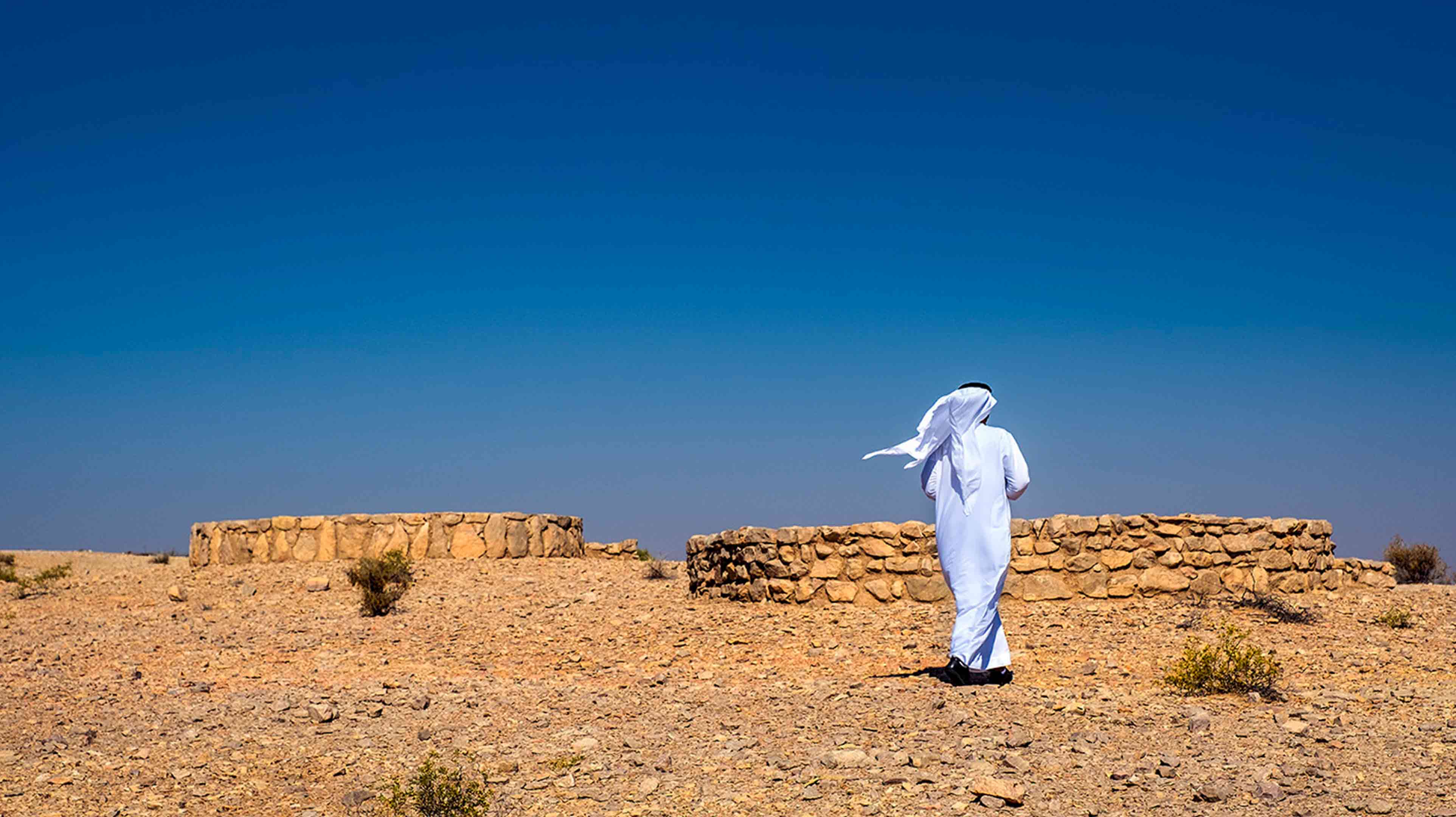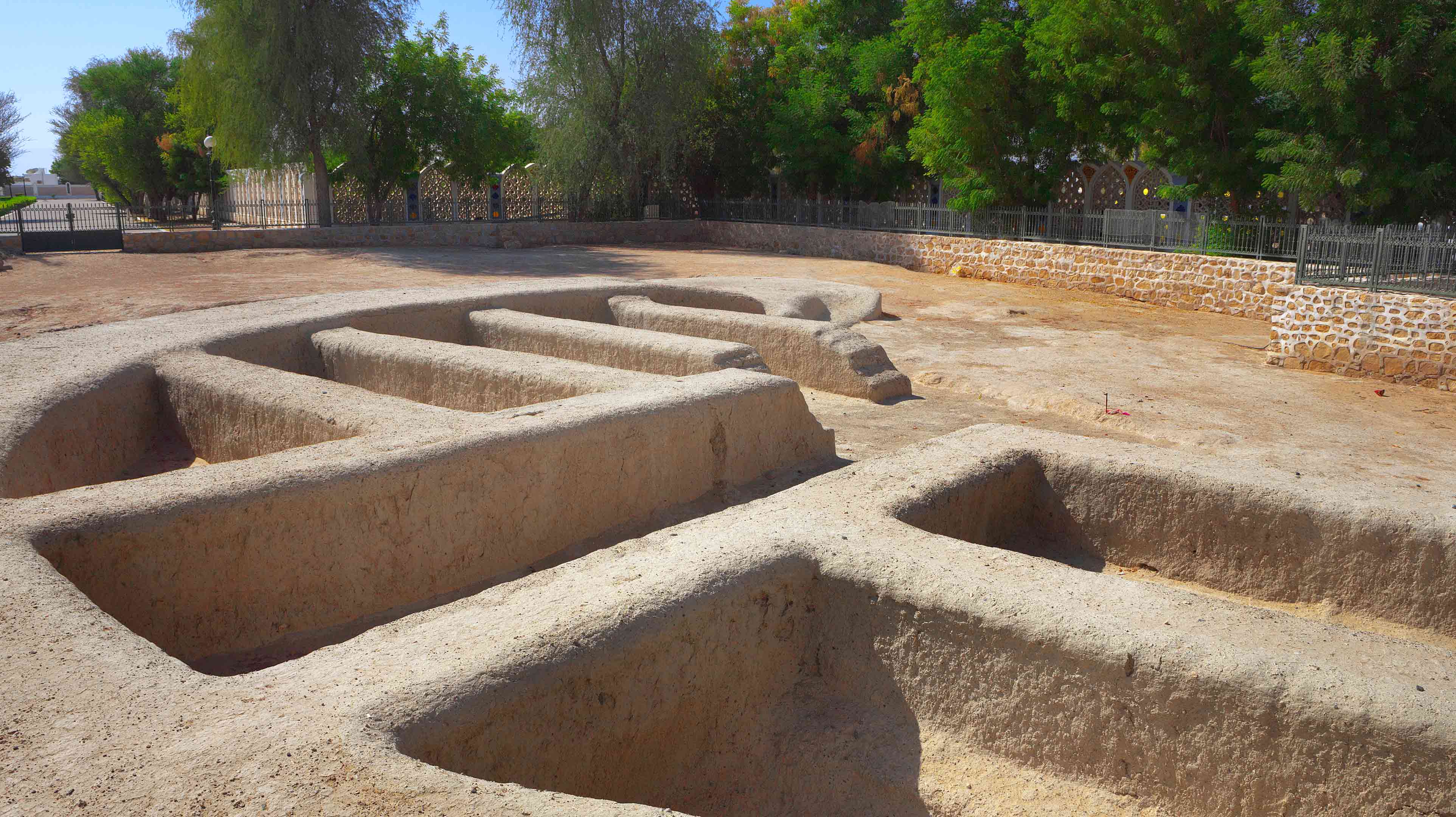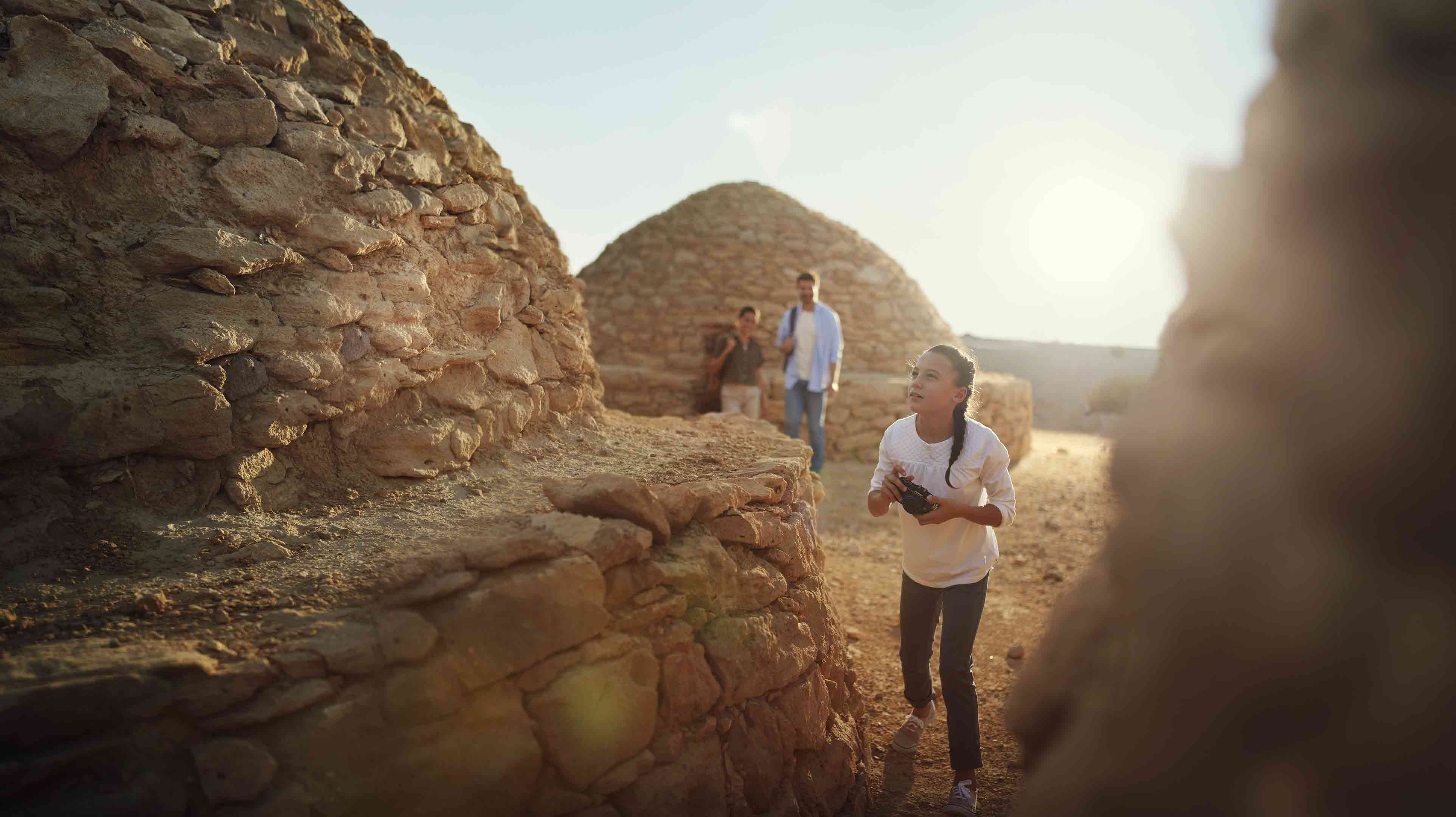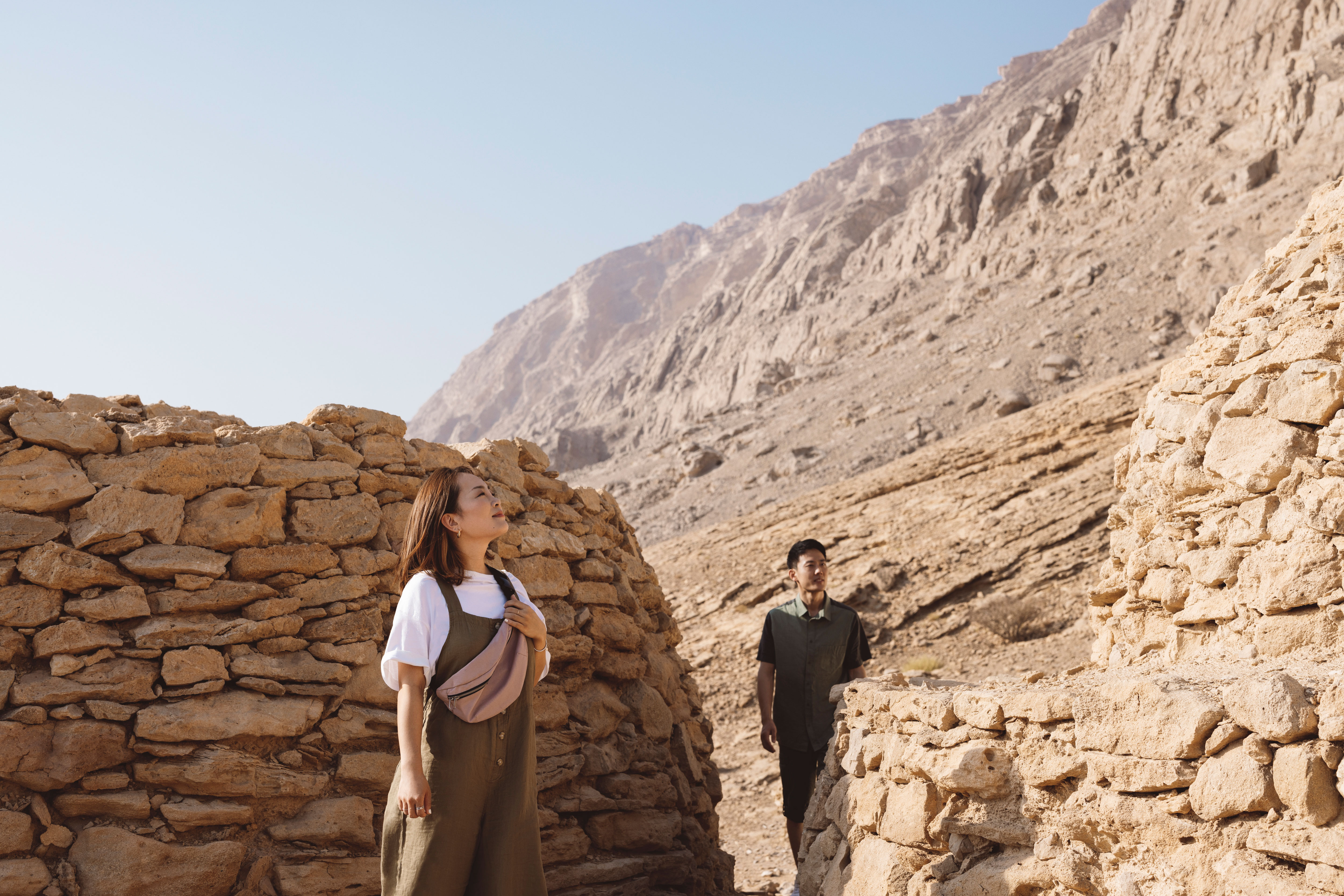הצג הכול
אתרי מורשת עולמית של אונסק"ו - UNESCO World Heritage sites
מספר מיקומים, אל עין
אל עין, שפירושו "המעיין", בעבר נווה מדבר ירוק וחיוני בנתיבי השיירות מאיחוד האמירויות לעומאן, היא עיר שופעת גנים ומלאת מורשת באמירויות. זהו אחד היישובים העתיקים בעולם המיושבים ברציפות ואתר מורשת עולמית של אונסק"ו.
אתר המורשת העולמית אל עין, שהוכרז על ידי אונסק"ו כאתר תרבות, כולל אתרי מורשת עולמית ובהם שישה נווי-מדבר של אל עין והאתרים הארכיאולוגיים בידה בינת סעוד, ג'אבל חאפית וכן חילי. אתרים עתיקים ומדהימים אלה מספרים על תרבות פרה-היסטורית והתיישבות של האדם באזור מדברי זה מאז התקופה הניאוליתית, ומזמינים אתכם ממש להיכנס אל העבר.
בידה בינת סעוד - Bida Bint Saud
מצפון לאל עין התגלו מספר קברים עתיקים הבנויים אבן בהם בוצעו חפירות ארכאולוגיות על גבי משטח סלעי שכבה ענק, גארן בינת סעוד, שמתנשא מהמדבר מעל החוות שסביבו באופן שלא ניתן להחמיצו. הגדול מבין הקברים הללו הוא קבר מלבני באורך שמונה מטרים וברוחב שישה מטרים. אף על פי שחלק מהקברים הם בני 5,000 שנה, ברבים מהקברים נעשה שימוש לכל אורך תקופת הברונזה והברזל.

חפירות באזור זה הובילו לגילוי מספר רב של חפצים, וביניהם חרבות פיפיות. כמו כן התגלה פלאג' (מערכת השקיה עתיקה) מלפני 3,000 שנה במרחק 1,500 מטר ממערב לגארן בינת סעוד. מלאכת מופת הנדסית זו מעידה על כושר ההמצאה של בני המקום, שהשיגו מים ממקור עמוק מתחת לפני השטח. כיום פלאג' זה, כמו אחרים בפארק הארכאולוגי חילי ובמקומות אחרים ברחבי איחוד האמירויות ועומאן, הוא העדות המוקדמת ביותר לשימוש הנרחב בטכנולוגיית השקיה זו ברחבי העולם. סמוך לפלאג' נמצא גם בניין גדול שבנוי מלבנים עשויות מבוץ, ובו חדר מרכזי שכולל בסיסי עמודים בני 3,000 שנה. אתרים אלה מדגישים את התפקיד הקריטי שמילאו אזור בידה בינת סעוד, ואל עין בכללותה, בפיתוח האזור המזרחי של אבו-דאבי.
הפארק הארכאולוגי חילי - Hili Archaeological Park
האתר הארכאולוגי חילי לא רק מספק את העדות המוקדמת ביותר לכפר חקלאי באיחוד האמירויות, אלא מכיל גם כפרים, אתרי קבורה ותשתיות חקלאיות מתקופת הברונזה (3200 לפנה"ס עד 1300 לפנה"ס) ומתקופת הברזל (1300 לפנה"ס עד 300 לפנה"ס). הכפר החקלאי העתיק ביותר נמצא באתר חילי 8 ותוארך לשנת 3000 לפנה"ס. בתקופה שבין 2500 לפנה"ס לבין 2000 לפנה"ס ההתיישבות בחילי התרחבה.

תקופה זו ידועה בשם תקופת אום א-נאר, על שם האי שליד חופי אבו-דאבי שבו התגלו לראשונה שרידי תרבות זו. האוסף הגדול ביותר של קברים ומבנים מתקופה זו באיחוד האמירויות נמצא באתר חילי. הציבור יכול לבקר במספר מבנים מתקופת הברונזה שנמצאים בפארק הארכאולוגי חילי. אתר חילי נמצא ליד עמק המאובנים, אזור עשיר במגוון מאובנים בני אלפי שנים, עידן שבו הים כיסה את האזור.
קברי ג'אבל חפית – Jebel Hafit Tombs
קברי ג'אבל חאפית הם קברים בני 5,000 שנה ומסמנים את תחילת תקופת הברונזה באיחוד האמירויות. חפירות שערכו ארכאולוגים מדנמרק בשנת 1959 מצאו עדויות לכלי חרס ונחושת בקברים אלה. הדבר מצביע על חשיבות הסחר הימי במפרץ הערבי. הקברים האלה, שכל אחד נועד לאדם יחיד, עשויים מסלעים מקומיים בלתי מסותתים או מסותתים למחצה. הם שונים מקברי אום א-נאר המאוחרים יותר, שנזכרים למעלה, אשר עשויים מלבנים מסותתות בצורה עדינה ושבהם נמצאו שרידים של מאות בני אדם.

